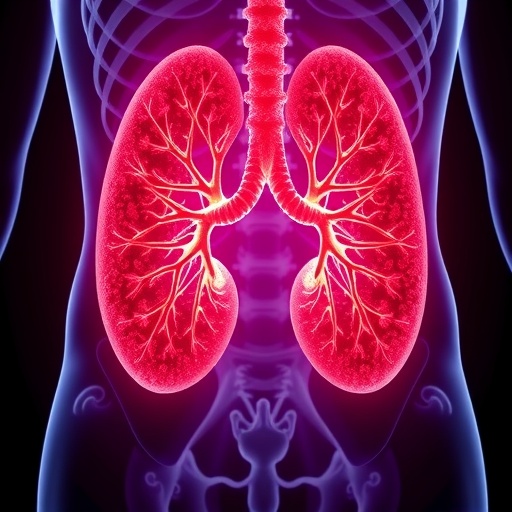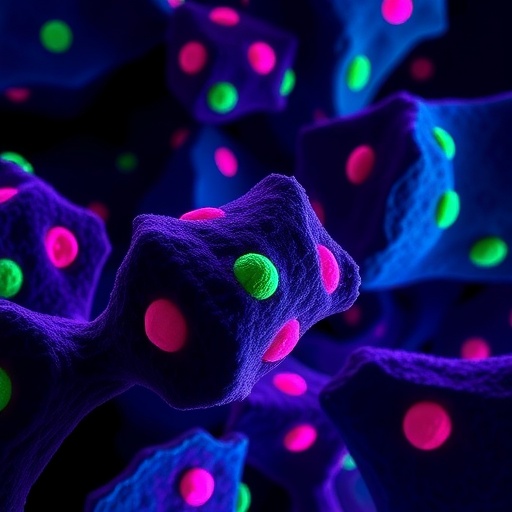
In a groundbreaking development poised to revolutionize the treatment landscape for bladder cancer, researchers have unveiled TAR-200, an innovative drug-device combination designed to deliver chemotherapy directly into the bladder with unprecedented efficacy. This miniature, pretzel-shaped device encapsulates gemcitabine, a chemotherapy agent, and is introduced into the bladder via a catheter, where it steadily administers the drug over an extended period of three weeks per treatment cycle. This novel delivery method drastically contrasts conventional approaches where chemotherapy agents linger inside the bladder only briefly, thereby limiting their therapeutic impact.
The clinical hallmark of TAR-200 was captured in a recent phase 2 study involving patients diagnosed with high-risk non-muscle-invasive bladder cancer (NMIBC) who had previously failed standard therapies. Conducted across 144 global sites and including 85 participants, the trial demonstrated an astounding 82% tumor elimination rate, with approximately half of the patients remaining cancer-free one year following treatment. These results, published in the prestigious Journal of Clinical Oncology, signal a paradigm shift in how urologists might manage this prevalent and challenging form of bladder cancer moving forward.
The uniqueness of TAR-200 lies fundamentally in its sophisticated drug release mechanics. As opposed to traditional intravesical chemotherapy, where solutions remain in the bladder for mere hours, this system ensures sustained and controlled gemcitabine exposure directly at the tumor site. By prolonging drug residence time, TAR-200 enhances the penetration of chemotherapy into the bladder wall, increasing tumor cytotoxicity while minimizing systemic side effects. The pretzel-shaped device’s design allows it to remain stable within the bladder cavity, continuously delivering the drug without needing frequent replacement or causing significant discomfort to the patient.
.adsslot_1LsBPc5xKQ{width:728px !important;height:90px !important;}
@media(max-width:1199px){ .adsslot_1LsBPc5xKQ{width:468px !important;height:60px !important;}
}
@media(max-width:767px){ .adsslot_1LsBPc5xKQ{width:320px !important;height:50px !important;}
}
ADVERTISEMENT
Historically, treatment options for patients with NMIBC resistant to Bacillus Calmette-Guérin (BCG) — an immunotherapy often considered the gold standard — have been starkly limited. For these individuals, radical cystectomy, or bladder removal surgery, has remained the definitive treatment despite its associated risks and profound impact on quality of life. The advent of TAR-200 offers a promising alternative, sparing many patients from invasive surgery by harnessing a localized, targeted chemotherapy approach with improved tolerability and patient compliance.
Sia Daneshmand, MD, Director of Urologic Oncology at Keck Medicine of USC and lead investigator on the study, emphasized the potential paradigm-altering impact of these findings. He explained that the central hypothesis driving TAR-200’s development was the principle that extended exposure directly within the bladder environment allows the chemotherapy drug to penetrate more deeply and uniformly, thereby enhancing tumor eradication rates. The study’s results robustly confirm this, illustrating not only superior tumor response but also a compelling safety and tolerability profile.
The clinical trial’s regimen involved inserting the TAR-200 device every three weeks for six months during the intensive treatment phase, followed by maintenance dosing four times annually over the subsequent two years. This schedule capitalizes on the device’s slow-release capability to maintain therapeutic drug concentrations over time without overwhelming systemic exposure. Importantly, patients tolerated the repeated insertions well, with only minimal adverse events reported, reinforcing TAR-200’s suitability for longer-term therapeutic use.
While combination therapies in oncology are common, the clinical trial also evaluated the efficacy of pairing TAR-200 with cetrelimab, an immunotherapy agent intended to boost antitumor immune response. Intriguingly, this combination did not outperform TAR-200 alone and was associated with an increased side effect burden, suggesting that the chemotherapy delivery system’s efficacy is optimized as a monotherapy in this clinical context. These findings streamline future treatment protocols, emphasizing simplicity and reduced toxicity without compromising effectiveness.
Beyond the immediate impact on bladder cancer care, TAR-200 ushers in a broader shift toward intelligent, localized drug delivery systems in oncology. The slow-release technology embodied by this device exemplifies a growing trend toward maximizing drug exposure at the tumor site while mitigating systemic toxicity—a historic challenge in chemotherapeutic regimes. If adopted widely, such frameworks could be extrapolated to various cancers and organs, heralding a new era of precision chemotherapy.
The regulatory trajectory for TAR-200 is also accelerating. The U.S. Food and Drug Administration (FDA) has granted the device a New Drug Application Priority Review status, a designation reserved for therapies that address significant unmet medical needs and promise to deliver substantial improvements in patient care. This expedited review process could fast-track TAR-200’s availability to patients, enhancing its clinical impact and setting a precedent for similar drug-device therapies.
Manufactured by the healthcare giant Johnson & Johnson, TAR-200 represents the confluence of pharmaceutical development and medical device innovation. This partnership underscores the growing recognition that integration across disciplines is critical to tackling complex diseases such as cancer. Moreover, the trial’s global footprint and comprehensive design illustrate a concerted effort to validate TAR-200’s safety and efficacy within diverse populations, broadening its applicability and credibility.
Looking forward, ongoing and future trials aim to further elucidate the long-term benefits and potential indications for the slow-release chemotherapy platform. Researchers remain cautiously optimistic, recognizing the remarkable responses seen thus far but also acknowledging the necessity of extended follow-up and larger patient cohorts to solidify TAR-200’s status in standard clinical practice. The enthusiasm within the urologic oncology community is palpable, as this innovation could redefine patient outcomes for a disease that has long resisted curative therapies without invasive interventions.
In summary, TAR-200 embodies a transformative leap in bladder cancer treatment by combining minimally invasive delivery with sustained chemotherapy exposure. By converting a challenging therapeutic landscape into one filled with new hope, this technology paves the way for improved survival, reduced morbidity, and profoundly better quality of life for patients confronting high-risk non-muscle-invasive bladder cancer. Its success signals a beacon for future oncological advancements hinged on smart drug delivery and patient-centric care.
Subject of Research: Development and clinical evaluation of TAR-200, a slow-release intravesical chemotherapy device for high-risk non-muscle-invasive bladder cancer.
Article Title: TAR-200 Demonstrates High Efficacy in Eliminating Tumors in Resistant Non-Muscle-Invasive Bladder Cancer: A Phase 2 Clinical Breakthrough
News Publication Date: [Not specified in the provided content]
Web References:
– Clinical Trial: https://www.clinicaltrials.gov/study/NCT04640623
– Lead Author Profile: https://www.keckmedicine.org/provider/sia-daneshmand/
– Keck Medicine of USC Urology: https://www.keckmedicine.org/services/urology/
– Study Publication: https://ascopubs.org/doi/10.1200/JCO-25-01651
– FDA Priority Review Announcement: [Not explicitly linked in content]
References:
Daneshmand S, et al. “A Phase 2 Study of TAR-200 in Patients with High-Risk Non-Muscle-Invasive Bladder Cancer.” Journal of Clinical Oncology. DOI: 10.1200/JCO-25-01651.
Image Credits: Photo courtesy of Johnson & Johnson
Keywords: Cancer treatments, Oncology, Bladder cancer, Non-muscle-invasive bladder cancer, Gemcitabine, Intravesical chemotherapy, Drug delivery system, TAR-200, Clinical trial, Urologic oncology, Slow-release chemotherapy, Targeted cancer therapy
Tags: bladder cancer treatment innovationchemotherapy delivery systemsclinical trial results bladder cancergemcitabine chemotherapy effectivenesshigh-risk non-muscle-invasive bladder cancerJournal of Clinical Oncology publicationlong-term cancer-free outcomesnovel cancer treatment methodsphase 2 bladder cancer studyTAR-200 drug-device combinationtumor elimination rates in bladder cancerurology advancements 2023





